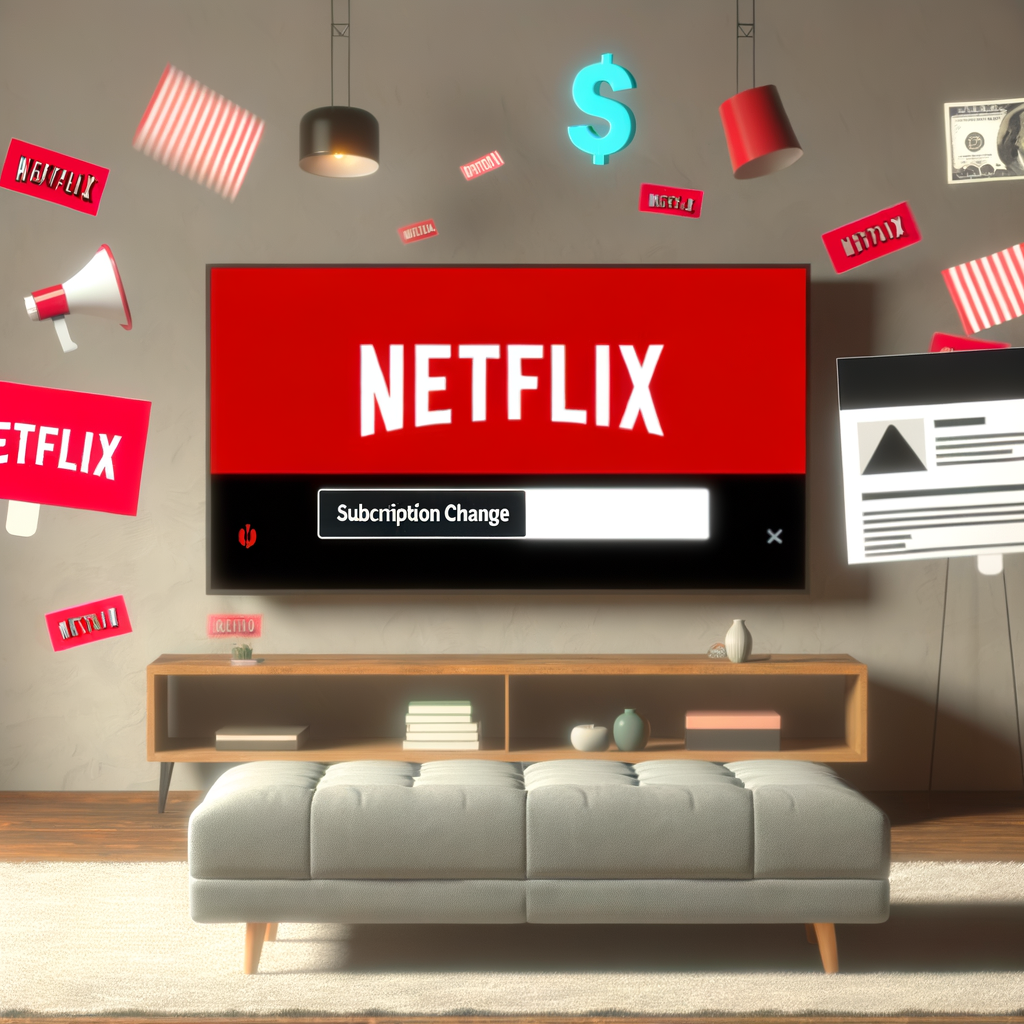“`html
Netflix Discontinues Cheapest Ad-Free Subscription Plan Impacting Users
As the streaming wars continue to heat up, Netflix has made a significant move by discontinuing its cheapest ad-free subscription plan. This decision has sent ripples through its extensive user base, raising concerns and sparking discussions about the future of streaming services. In this blog post, we’ll dive deep into why Netflix decided to take this step, how it impacts current and potential users, and what the broader implications might be for the streaming industry.
Why Did Netflix Discontinue Its Cheapest Ad-Free Plan?
The journey of Netflix from a DVD rental service to a streaming giant has been marked by continuous adaptation to market trends and user preferences. However, the decision to eliminate the cheapest ad-free plan seems to be rooted in multiple factors:
- Revenue Maximization: By nudging users towards more expensive plans, Netflix aims to increase its per-user revenue. This decision aligns with the company’s long-term strategy of enhancing profitability, particularly in markets where subscription growth is plateauing.
- Content Costs: High-quality content comes at a steep price. With the rising costs of producing blockbuster films and high-caliber series, Netflix needs to ensure it has a steady revenue stream to fuel its ambitious projects.
- Advertising Revenue: Introducing or expanding ad-supported plans opens another revenue avenue. By discontinuing the ad-free option, they might be pushing users to either accept ads or opt for higher-tier plans.
Impacts on Current Users
This change doesn’t come without consequences. For those who were comfortably settled in the cheapest ad-free plan, this decision presents a few challenges:
- Increased Expenses: Users will have to choose between paying more for an ad-free experience or dealing with interruptions from ads.
- User Experience: For many, the ad-free experience was a significant advantage. The shift might lead to dissatisfaction among those who have to tolerate ads in their viewing experience.
- Platform Switching: There’s always the risk of users switching to competing services. With numerous streaming platforms available, some users might find better value elsewhere.
Choices for Users Post-Change
Here are the options available to subscribers:
- Upgrade to a Higher Tier: Users who prioritize an uninterrupted viewing experience may opt to upgrade to more expensive plans.
- Switch to Ad-Supported Plans: Those who are okay with ads might switch to the cheaper ad-supported alternatives offered by Netflix.
- Explore Other Platforms: With the vast array of streaming options, subscribers might investigate services like Hulu, Disney+, or Amazon Prime Video.
Broader Implications for the Streaming Landscape
The discontinuation of Netflix’s cheapest ad-free plan will likely have reverberations across the entire streaming industry. It highlights several trends and challenges facing these companies:
- Monetization Strategies: As competition intensifies, platforms are exploring diverse revenue models, from premium subscriptions to ad-supported tiers.
- User Retention: Keeping users happy while maximizing revenue is a delicate balance. Price hikes or plan removals risk pushing subscribers to competitors.
- Content Investment: High-quality content remains the primary driver for attracting and retaining subscribers. The need for robust content libraries justifies the increased pricing strategies.
Impacts on Smaller Players
While giants like Netflix can afford to experiment with pricing models, smaller players might feel the heat. They need to:
- Innovate Creatively: Offer unique features or exclusive content to stand out.
- Adjust Pricing Thoughtfully: Avoid drastic pricing changes that could alienate their limited user base.
- Collaborate: Partnering with telecom companies or bundling services might be viable strategies to increase value propositions.
What Should Users Do Now?
For users feeling the pinch, it’s essential to evaluate their options:
- Assess Viewing Habits: How often do you use Netflix? Is it worth the higher price, or do you watch sparingly enough to tolerate ads?
- Compare Competitors: Look at what other streaming services offer. You might find better packages or exclusive content that suits your needs.
- Consider Bundles: Some telecom providers offer bundled services, including multiple streaming subscriptions, which can be more economical.
Tips to Make the Transition Easier
Whether you choose to stick with Netflix or explore other options, a few tips can ease the transition:
- Trial Subscriptions: Take advantage of free trials offered by other streaming platforms to test if they meet your needs.
- Watch List Management: Revisit and manage your Netflix watch list to prioritize must-watch content before making any shifts.
- Stay Updated: Keep an eye on new offers or promotional deals from streaming services.
Conclusion
Netflix’s move to discontinue its cheapest ad-free subscription plan signifies a broader trend in the streaming industry. As companies strive to balance content quality, user experience, and profitability, users will face increasing choices and costs. For subscribers, the best approach is to stay informed, evaluate their options, and make decisions that best fit their viewing preferences and budgets.
As the streaming wars rage on, one thing remains certain: change is constant, and adaptability is key. Whether you’re a Netflix loyalist or exploring new horizons, your streaming experience is evolving in this dynamic digital landscape.
“`



